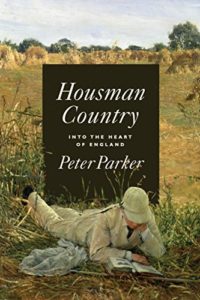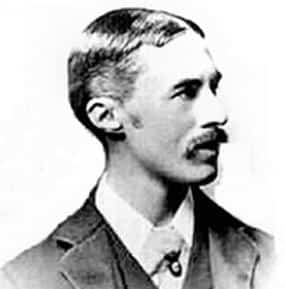In 1896, A.E. Housman (1859-1936) published a poetry collection that might have seemed an unlikely candidate for one of the most popular books of poetry of all time. And yet it was, and is. Pocket editions of A Shropshire Lad were carried into the trenches by British soldiers in World War I. Countless editions were printed from 1896 to well after Housman’s death, and the book is still published today. It was widely read not only in England but also in Canada, Australia, the United States, and many other countries.
It is not about war, and yet it speaks to the experience of war. It is not about the Industrial Revolution, and yet it looks backward to a time and a place idealized because of what the Industrial Revolution wrought. Critics generally didn’t like it (and haven’t liked it since), but the reading public loved it.

“It is when the Lad is furthest away from his country,” he writes, “looking back at it from exile in London, that he finds it most appealing, and this reflects the nostalgia of not only of Housman himself, obliged to abandon the rural scenes of his youth in order to earn a living in the capital, but of a large swathe of the English population.” That nostalgia is not only English but American and Canadian as well. But it is inherently English, and the collection framed the broad understanding of what England was and what it still is.
Parker also undertakes an extensive investigation of how A Shropshire Lad came to be. Housman wasn’t a Shropshire lad himself; he was actually born and raised next door in Worcestershire. During his school days, he had a distant view of the Shropshire hills from his window, but he never spent much time there.

A.E. Housman about the time he wrote “A Shropshire Lad”
The collection was born of Housman’s own experiences, stories he heard while growing up, and even, Parker says, a very long infatuation with a fellow Oxford student and close friend, Moses Jackson, who did not return Housman’s interest. The strains of that infatuation play through A Shropshire Lad, and it may be that sense of rejection and being an “outsider” that also appealed to so many readers.
The work was not written as a collection of war poetry, but it undoubtedly influenced the famous poets of World War I, including Wilfred Owen, Siegfried Sassoon, and Rupert Brooke. But the work became strongly associated with war. “It was the war itself,” Parker says, “that made Housman a war poet, and one of the reasons why is that World War I was the first war fought not by professional soldiers but by volunteers and conscripts, just like those lads from Shropshire.”

Peter Parker
Parker is the author of Ackerley: The Life of J.R. Ackerley (1991); Isherwood: A Life Revealed (2004); The Old Lie: The Great War and the Public School Ethos (2007); and The Last Veteran: Harry Patch and the Legacy of War (2009). He writes about novelists, poets, World War I, and gardening for a wide array of publications, including The Spectator. He lives in London’s East End.
Housman Country is a significant achievement in scholarship. In addition to the narrative, the book includes an extensive bibliography, notes, and a table of contents, as well as the entire text of A Shropshire Lad as an appendix. It’s a moving work, reminding us of how our understanding of a poem or a poetry collection comes to be, and what makes certain poems resonate so deeply within our minds.
Related:
The Poems the Soldiers Read in World War I
Photo by Bob Farrell, Creative Commons, via Flickr. Post by Glynn Young, author of the novels Dancing Priest and A Light Shining, and Poetry at Work.
__________________________

“I require all our incoming poetry students—in the MFA I direct—to buy and read this book.”
—Jeanetta Calhoun Mish
- Poets and Poems: Peter Murphy and “You Too Were Once on Fire” - October 14, 2025
- “Your Accent! You Can’t Be from New Orleans!” - October 9, 2025
- Poets and Poems: Donna Vorreyer and “Unrivered” - October 7, 2025

Bethany R. says
Thanks for pointing out Peter Parker’s explanation that, “’It is when the Lad is furthest away from his country,’” he writes, “’looking back at it from exile in London, that he finds it most appealing…” That idea quite relatable, as it carries over into many aspects of life and relationships.
Sandra Heska King says
I took a few minutes to skim through the book preview, stopping at a couple of spots. Like where Housman talked about pieces of poems coming to him during two- to three-hour afternoon walks. Like how many of us allow ourselves that kind of time?
Also… “Poetry is not the thing said but a way of saying it.” He “suggested that those who had admired Wordsworth in the nineteenth century did so for the wrong reasons: ‘they were most attracted to what may be called his philosophy’, while remaining largely deaf to what was far more important, ‘that thrilling utterance which pierces the heart and brings tears to the eyes of thousands who care nothing for his opinions and beliefs’. “